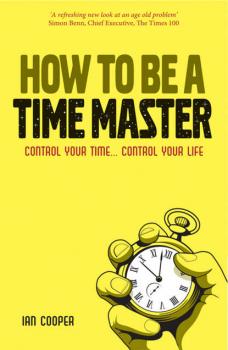Группа авторов
Список книг автора Группа авторовThe Nonprofits' Guide to Internet Communications Law
Invaluable guidance on the most important legal issues facing nonprofits today Internet communication is the lifeblood of countless nonprofit organizations, yet there exists no specific law to provide for its regulation. Without solid legal guidance, nonprofits risk not only missing out on the unlimited opportunities that the Internet has to offer, but also jeopardizing their tax-exempt status. The Nonprofits' Guide to Internet Communications Law analyzes and explains the laws applicable to Internet communications by nonprofit organizations. Nonprofit law expert Bruce Hopkins writes that with Congress and government agencies reluctant to create new law, it will ultimately be up to the courts to determine the future of Internet law affecting nonprofit organizations. Extrapolating from the underlying principles of existing law, Hopkins addresses the legal ramifications of Internet business activities, charitable-giving administration, fundraising programs, lobbying, political campaign activities, and more. The Nonprofits' Guide to Internet Communications Law proves an unparalleled resource for this emerging field.
Gadgets, Games and Gizmos for Learning
Gadgets, Games, and Gizmos is an innovative book that provides practical and original solutions to the impending boomer/gamer knowledge and skills transfer gap. The book outlines how gamer values such as the use of cheat codes, the love of gadgets, the need to play games, and the desire to be constantly connected can be used as methods for moving information from the heads of the boomers to the fingertips and gadgets of the gamers. As organizations begin to think strategically about how to attract, retain, and train new talent, this book, written by Karl Kapp, named one of 2007's Top 20 Most Influential Training Professionals by TrainingIndustry, Inc., will be an invaluable resource.
E-Learning Solutions on a Shoestring
Is e-learning at your organization chronically underfunded? Discover how you can create workplace solutions with minimal budget in e-Learning Solutions on a Shoestring. Author Jane Bozarth, recognized as e-Learning Centre's October 2005 Pick of the Month, provides the nuts-and-bolts information you need to incorporate e-learning solutions at minimal cost. She offers myriad strategies for building from-scratch programs, recycling, reusing, and repurposing resources; negotiating reasonable expenses for «store bought» e-learning products; and incorporating real-world ideas for assembling tools, techniques, and strategies into workplace solutions.
101 Ways to Make Training Active
When it was first published in 1995, Mel Silberman's 101 Ways to Make Training Active became an instant bestseller. Now this revised and updated second edition offers the same dynamic approach and several completely new case examples. The examples support each exercise and highlight real-time uses of the highly successful Active Training method. In addition, the book includes 200 training tips that form the nuts-and-bolts of successful active training. These tips incorporated in the book's top ten lists show how to build quality, activity, variety, and direction into your training programs. For the first time 101 Ways to Make Training Active features a CD-ROM containing all the original «Top Ten Trainers Tips and Techniques» lists for easy reproduction and distribution.
Integrating Lean Six Sigma and High-Performance Organizations
You know that great improvement initiatives abound. What you may not know is how to implement them effectively; get fast, dramatic improvement; and sustain those results for the long term. It's a common problem. But take heart: The next wave of performance excellence is here—the seamless integration of today's leading improvement methods. This integration, described thoroughly in this book, builds upon the strengths and addresses the shortcomings of each discipline. For example: While Six Sigma provides a disciplined, quantitative approach, many efforts fail because they don't address the people side of performance improvement and change management. Plus, Six Sigma efforts are expensive and take too long to produce results. Lean Manufacturing techniques can provide quick results, but they lack quantitative tools to reduce variation, and, as a result, are incapable of addressing numerous high-dollar improvement opportunities. Though High-Performance Organizations (HPO) create conditions for great motivation, improve intra-organizational interactions, and lower employee turnover, many HPO interventions fail to produce solid business results because members lack a disciplined approach and the tools for improvement.
Simulations and the Future of Learning
Simulations and the Future of Learning offers trainers and educators the information and perspective they need to understand, design, build, and deploy computer simulations for this generation. Looking back on his recent first-hand experience as lead designer for an advanced leadership development simulation, author Clark Aldrich has created a detailed case study of the creation and deployment of an e-learning simulation that had the development cycle of a modern computer game. With this book Aldrich, a leader in the e-learning field, has created an intriguing roadmap for the future of learning while taking us along on an entertaining rollercoaster ride of trial and error, success and failure. Simulations and the Future of Learning outlines the design principles and critical decisions around any simulation's components— the interface, the physics and animation systems, the artificial intelligence, and sets and figures. Using this accessible resource, readers will learn how to create and evaluate successful simulations that have the following characteristics: authentic and relevant scenarios; applied pressure situations that tap user's emotion and force them to act; a sense of unrestricted options; and replayability.
The Trainer's Warehouse Book of Games
Kick up your training sessions a notch! If you want to make group learning more fun and effective, this is the resource for you. Training expert Elaine Biech, author of Training for Dummies, challenged some of the world’s best game designers to create never-before-seen games using popular training toys and tools from Trainer’s Warehouse, the nation’s leading supplier of learning resources. Whether you’re a full-time workplace learning professional or occasional trainer, this collection contains the most ingenious and inventive collections of learning games. The collection uses a host of common and readily available tools and toys, from throwables and tactiles, to white boards on a stick and noise-making boomwackers. This book will appeal to anyone who delivers training and education—and presenters, too—the games run the gamut from short energizers, icebreakers and closers, to more involved group and team-building activities.
The Internet Encyclopedia, Volume 3 (P - Z)
The Internet Encyclopedia in a 3-volume reference work on the internet as a business tool, IT platform, and communications and commerce medium.
The Internet Encyclopedia, Volume 2 (G - O)
The Internet Encyclopedia in a 3-volume reference work on the internet as a business tool, IT platform, and communications and commerce medium.
How to be a Time Master
If you could save just 24 minutes a day you'd gain an extra 6 days a year. Some say the world was created in 6 days. What could you achieve? You don't have to work harder or spend hours defining your life goals in order to manage your time. The Time Master approach is full of quick painkilling solutions and long-term 'know-how'. This is more than time management, this is time mastery. Forget about complicated planning techniques and endless charts – with over 400 practical tips and tricks at your fingertips, you'll be able to tackle your main problem areas and take back control of your time and your life, quickly. As a Time Master, you will learn how to slow down and enjoy doing the things you really want to do. Master ways to: Work out what really needs to be done and when Manage emails, your screen time and the telephone Run brilliant meetings Deal with interruptions Stop others stealing your time Say no when necessary and manage our boss Make time for your health And many more … 'A common sense approach to time management … in an easy to read format.' –Clare Evans, Time Management Coach and author of Time Management For Dummies









